- PDF
Communication
- PDF
Article Overview
The following article describes the Email and SMS building blocks located under the Communication category.
Communication
(See Figure 1)
The Communication category contains three building blocks:
- SMS
- Messaging

Figure 1: Communication
The building blocks are used to configure communication channels for interacting with different end-users (roles) during the life cycle of a process, for example:
- When starting a new step, upon the initiation of the process
- Upon submission, for example, sending an email notifying an end-user that their part of the process is complete
(See Figure 2 to Figure 9)
The Email contains the following options and fields:
- Label
- Role
- Edit Message
- Description
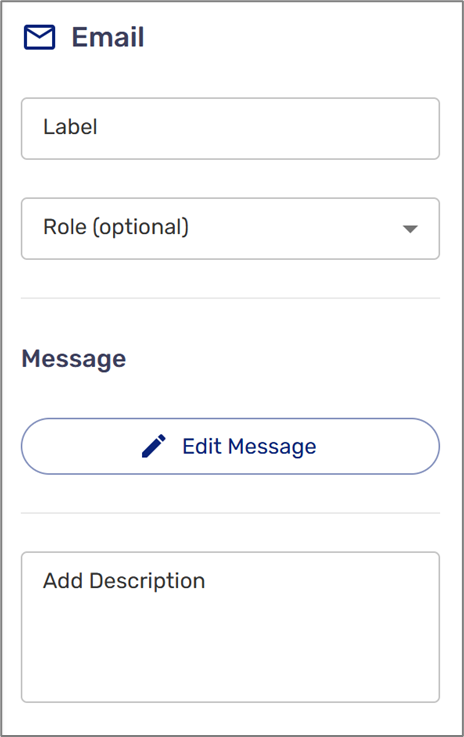
Figure 2: Email
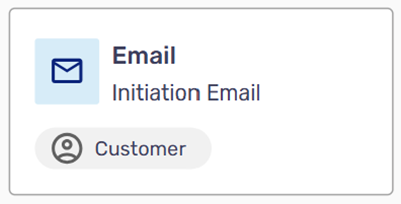
Figure 3: Label and Role
When clicking the Edit Message button, the Edit Message window appears. This window is divided into two sections:
- Message Content
- Advanced
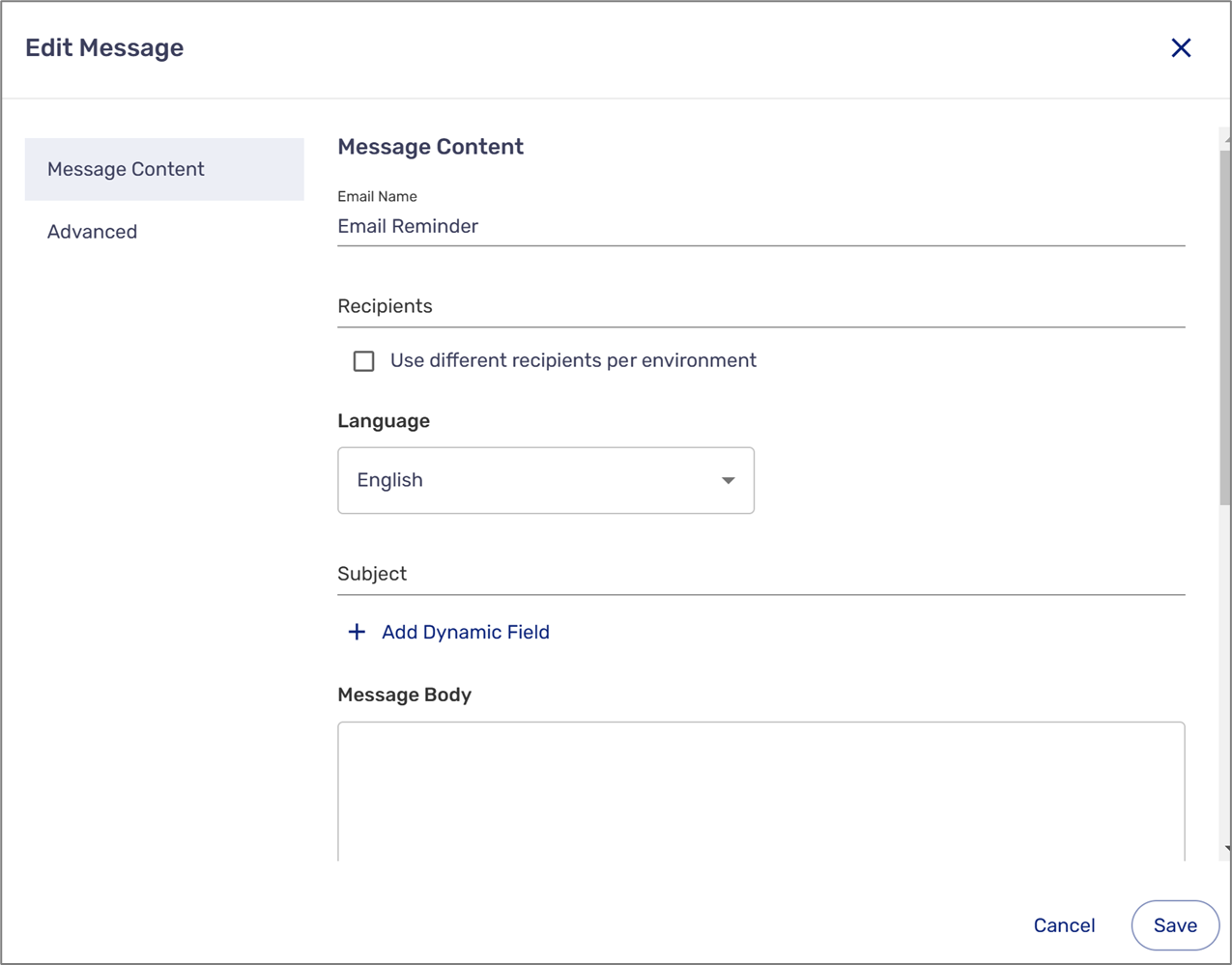
Figure 4: Edit Window Message
The Message Content section contains the following fields and options:
- Email Name
- Recipients - can be static or dynamic:
- Static - for example, r.riback@easysend.io
- Dynamic - data items and/or metadata items
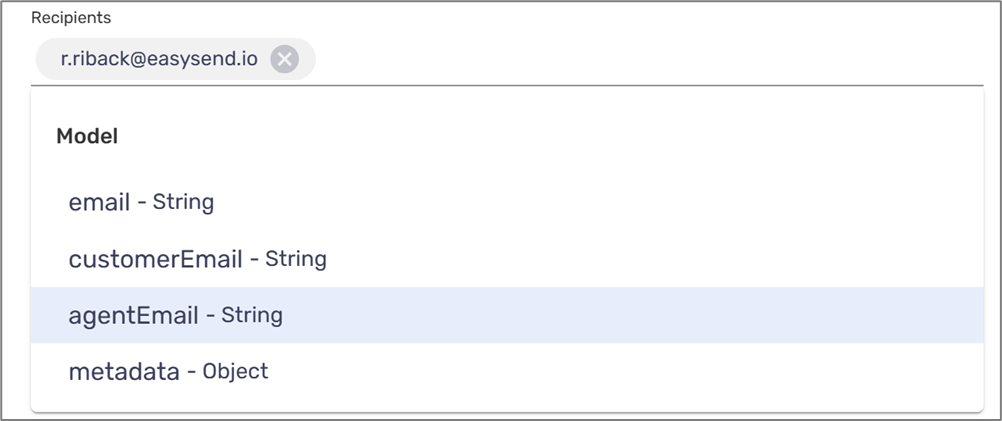
Figure 5: Adding Recipients
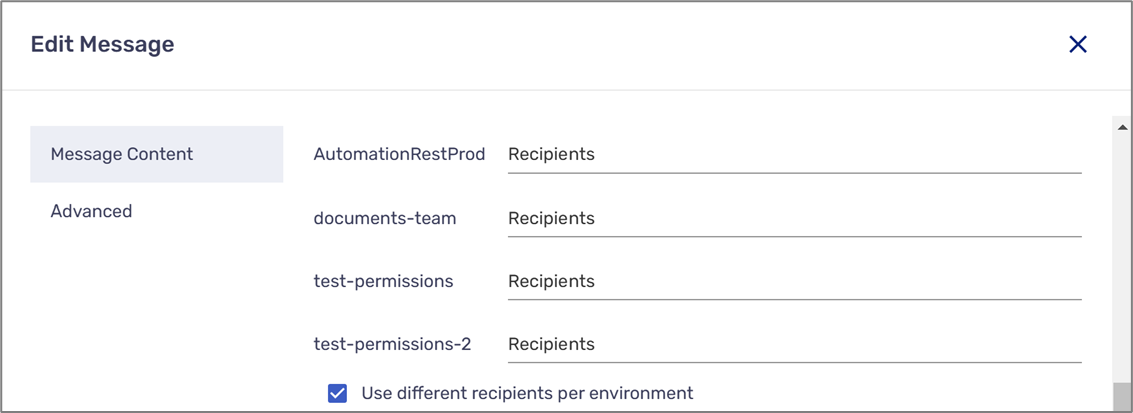
- The language of the email (according to available languages in your environment)
- Subject - can include dynamic data items and/or metadata items

Figure 6: Subject
- Message Body - the content of the email:
- Written in HTML
- HTML tags such as <br> and <a> can be used
- The content can include dynamic fields:
- Data items
- Metadata items
- A Process link and a Co-Browsing link can be included in the content by clicking the + Add Dynamic Field option and selecting from the list under the Workflow category (1):

Figure 7: Message Body
The Advanced section contains the following fields and options:
- Attachments - can include:
- PDF - the PDF files that were uploaded to the Builder platform as part of the platform
- User Files - the files that were uploaded by the end-user during the process
- Model As - a copy of the Model of the process in three different formats:
- JSON
- XML
- CSV
- Audit Trail As - an audit trail copy of the process in two different formats:
- JSON
- Model As - a copy of the Model of the process in three different formats:
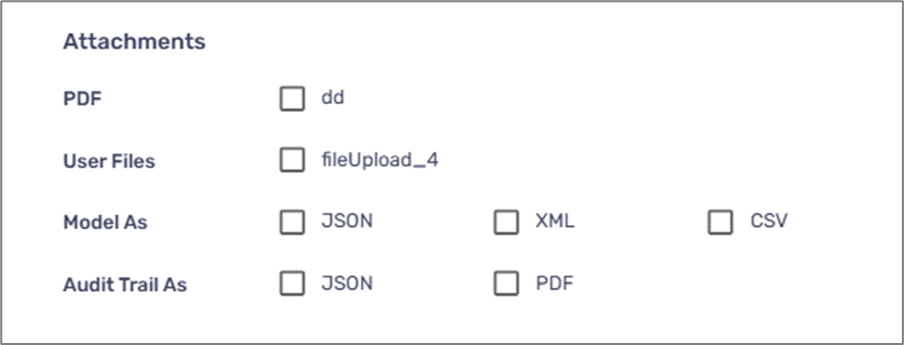
Figure 8: Message Body
- Advanced options:
- Set a custom reply-to email address:
- When toggle to on - enables to set a custom reply-to email address
- When toggle to off - the option is disabled
- Encrypt all PDF documents attached to email:
- When toggle to on - enables to encrypt attached PDF documents with a password
- When toggle to off - the option is disabled
- Email footer:
- When toggle to on - enables to select a footer template
- When toggle to off - the option is disabled
- Set a custom reply-to email address:
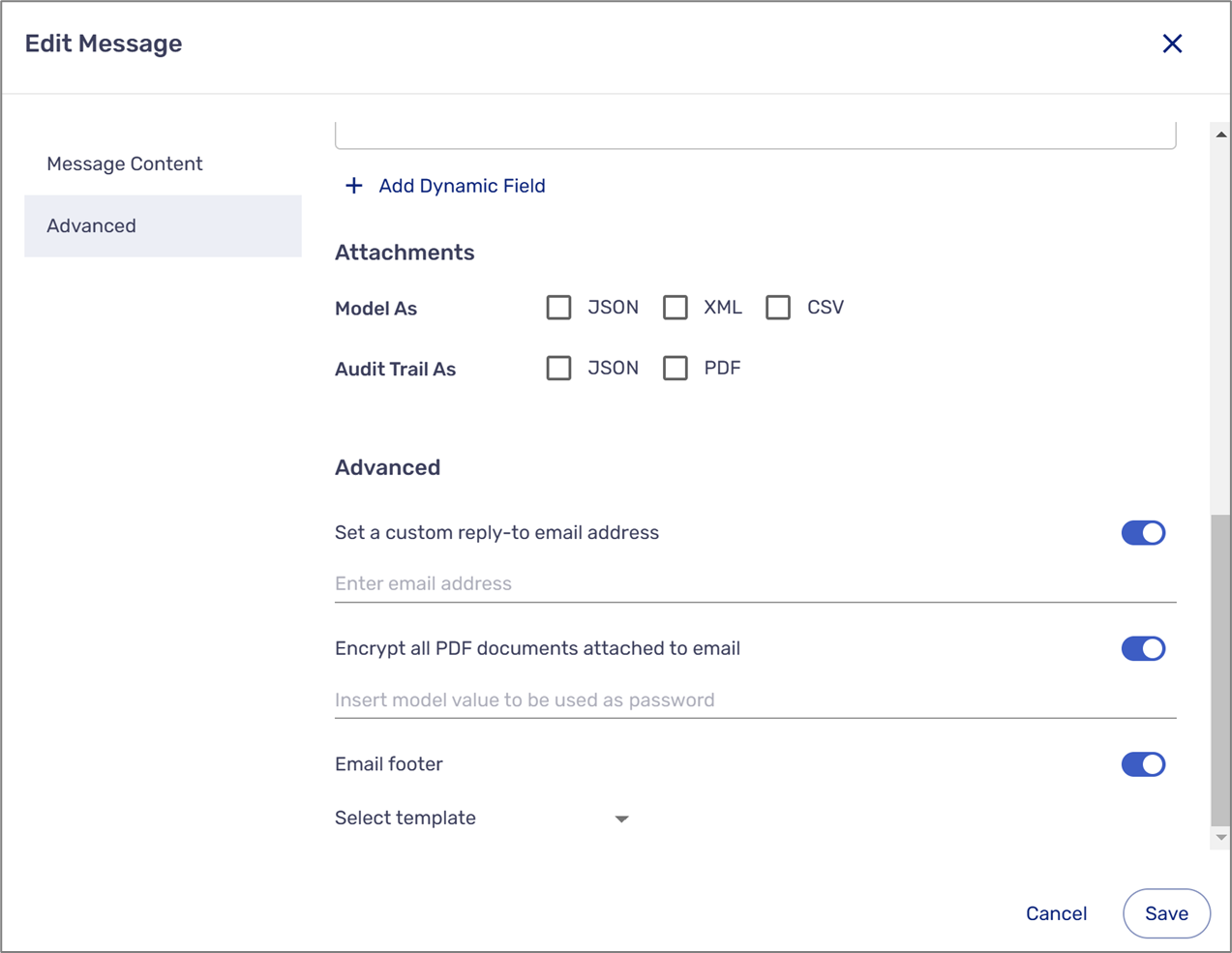
Figure 9: Advanced Options
SMS
(See Figure 10 to Figure 14)
The SMS contains the following options and fields:
- Label
- Role
- Edit Message
- Description
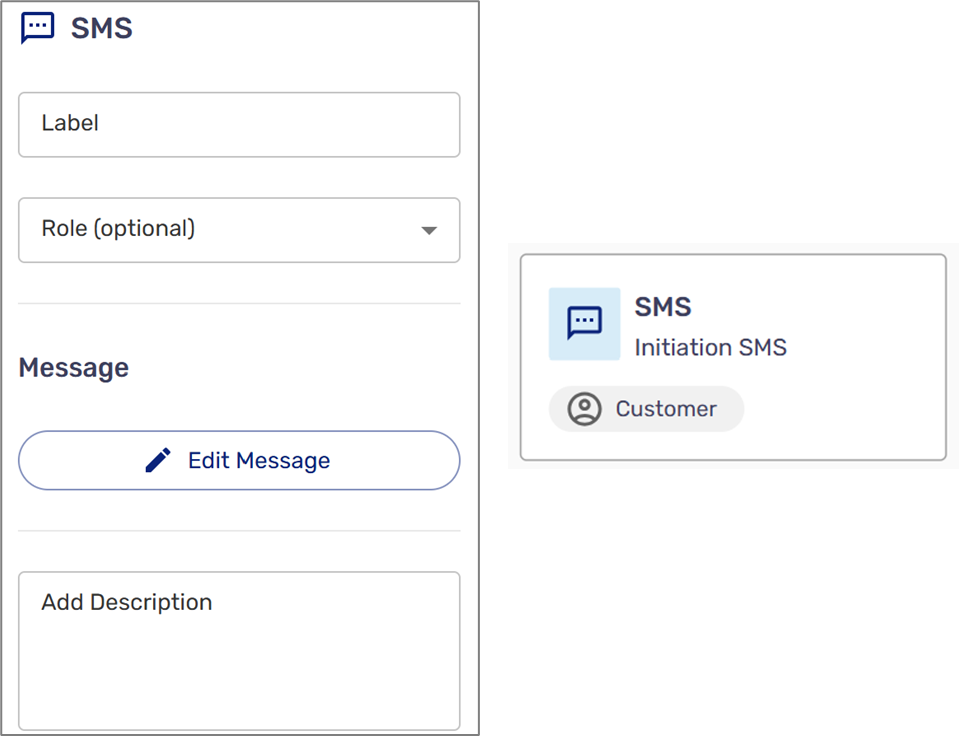
Figure 10: SMS/Label and Role
When clicking the Edit Message button, the Edit Message window appears. This window contains the Message Content section with the following fields and options:
- Email Name
- Recipients - can be static or dynamic:
- Static - for example, 2679834455
- Dynamic - data items and/or metadata items
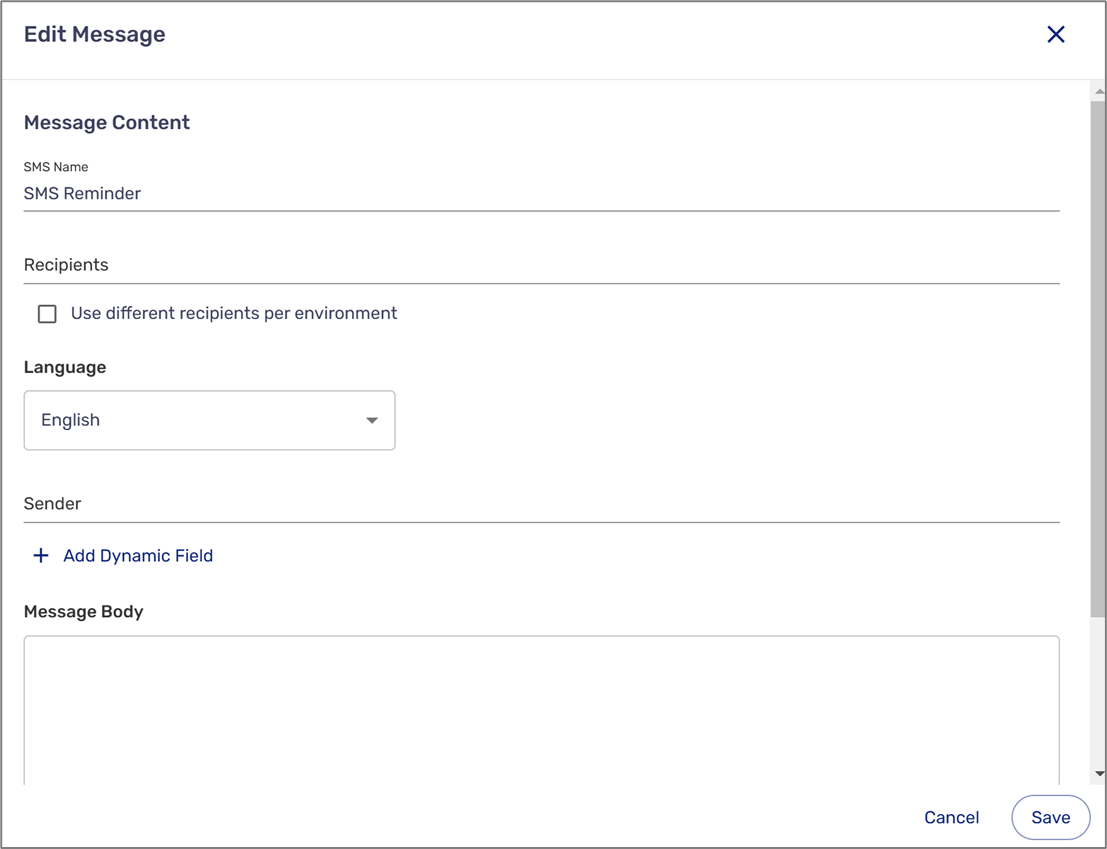
Figure 11: Edit Message Window

Figure 12: Adding Recipients

- The language of the SMS (according to available languages in your environment)
- Sender - can include dynamic data items and/or metadata items

Figure 13: Sender
- Message Body - the content of the SMS:
- The content can include dynamic fields:
- Data items
- Metadata items
- A Process link and a Co-Browsing link can be included in the content by clicking the + Add Dynamic Field option and selecting from the list under the Workflow category (1):
- The content can include dynamic fields:
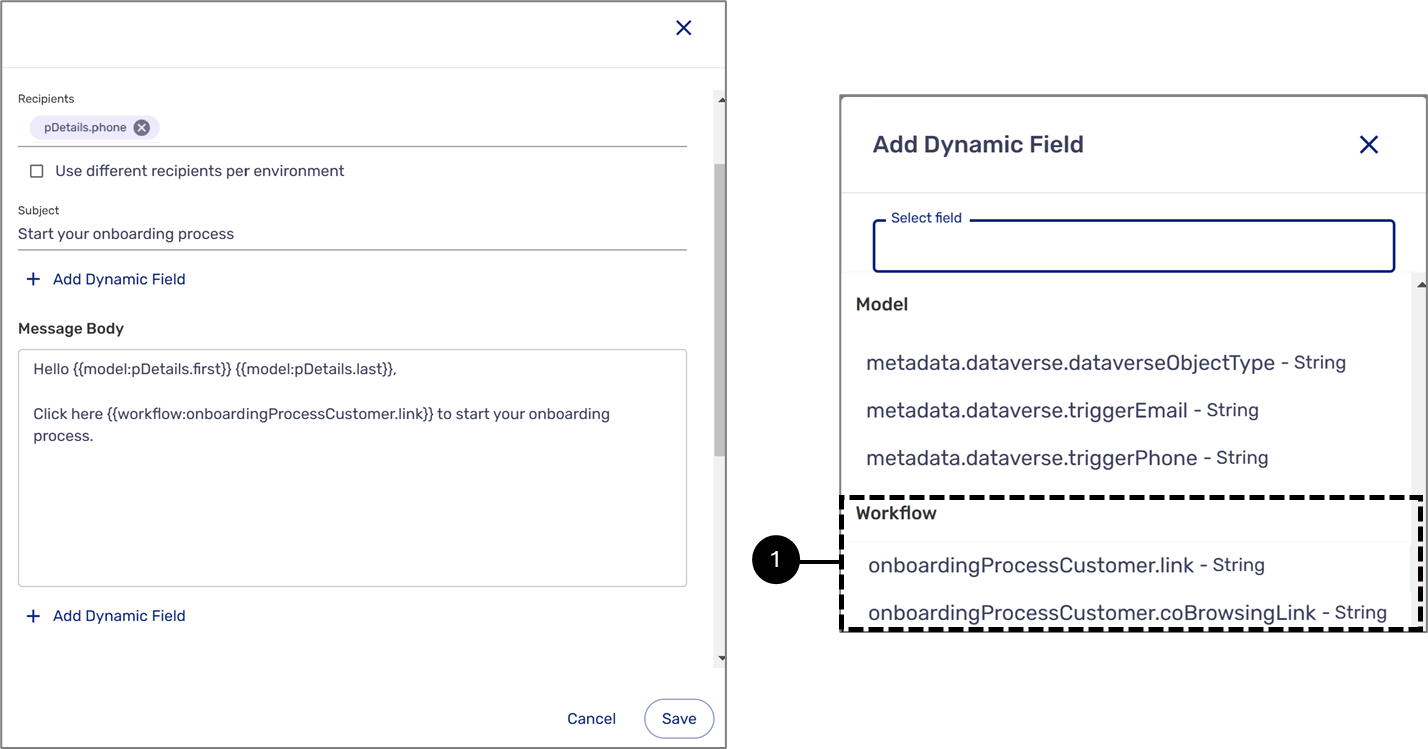
Figure 14: Message Body
Messaging
For detailed information about messaging, click here.

